Attached files
| file | filename |
|---|---|
| 8-K - FORM 8-K - QUESTCOR PHARMACEUTICALS INC | d464037d8k.htm |
 January
2013 January 2013
NASDAQ:
QCOR
NASDAQ:
QCOR
JP Morgan 2013 Healthcare Conference
Steve Cartt
Chief Operating Officer
Exhibit 99.1
1 |
 Safe Harbor
Statement Note:
Except
for
the
historical
information
contained
herein,
this
press
release
contains
forward-looking
statements
that
have
been
made
pursuant
to
the
Private
Securities
Litigation
Reform
Act
of
1995.
These
statements
relate
to
future
events
or
our
future
financial
performance.
In
some
cases,
you
can
identify
forward-looking
statements
by
terminology
such
as
"believes,"
"continue,"
"could,"
"estimates,"
"expects,"
"growth,"
"may,"
"plans,"
"potential,"
“remain,”
"should,"
"substantial"
or
"will"
or
the
negative
of
such
terms
and
other
comparable
terminology.
These
statements
are
only
predictions.
Actual
events
or
results
may
differ
materially.
Factors
that
could
cause
or
contribute
to
such
differences
include,
but
are
not
limited
to,
the
following:
Our
reliance
on
Acthar
for
substantially
all
of
our
net
sales
and
profits;
Reductions
in
vials
used
per
prescription
resulting
from
changes
in
treatment
regimens
by
physicians
or
patient
compliance
with
physician
recommendations;
The
complex
nature
of
our
manufacturing
process
and
the
potential
for
supply
disruptions
or
other
business
disruptions;
The
lack
of
patent
protection
for
Acthar;
and
the
possible
FDA
approval
and
market
introduction
of
competitive
products;
Our
ability
to
continue
to
generate
revenue
from
sales
of
Acthar
to
treat
on-label
indications
associated
with
NS,
and
our
ability
to
develop
other
therapeutic
uses
for
Acthar;
Research
and
development
risks,
including
risks
associated
with
Questcor's
work
in
the
area
of
NS
and
potential
work
in
the
area
of
Rheumatology,
and
our
reliance
on
third-parties
to
conduct
research
and
development
and
the
ability
of
research
and
development
to
generate
successful
results;
Our
ability
to
comply
with
federal
and
state
regulations,
including
regulations
relating
to
pharmaceutical
sales
and
marketing
practices;
The
results
of
any
pending
or
future
litigation,
investigations
or
claims,
including
with
respect
to
the
investigation
by
the
United
States
Attorney’s
Office
for
the
Eastern
District
of
Pennsylvania
regarding
the
Company’s
promotional
practices;
Regulatory
changes
or
other
policy
actions
by
governmental
authorities
and
other
third
parties
in
connection
with
U.S.
health
care
reform
or
efforts
to
reduce
federal
and
state
government
deficits;
Our
ability
to
receive
high
reimbursement
levels
from
third
party
payers;
An
increase
in
the
proportion
of
our
Acthar
unit
sales
comprised
of
Medicaid-eligible
patients
and
government
entities;
Our
ability
to
estimate
reserves
required
for
Acthar
used
by
government
entities
and
Medicaid-eligible
patients
and
the
impact
that
unforeseen
invoicing
of
historical
Medicaid
prescriptions
may
have
upon
our
results;
Our
ability
to
effectively
manage
our
growth,
including
the
expansion
of
our
sales
forces,
and
our
reliance
on
key
personnel;
Risks
associated
with
our
pending
acquisition
of
BioVectra
Inc.;
The
impact
to
our
business
caused
by
economic
conditions;
Our
ability
to
protect
our
proprietary
rights;
The
risk
of
product
liability
lawsuits;
Unforeseen
business
interruptions
and
security
breaches;
Volatility
in
Questcor's
monthly
and
quarterly
Acthar
shipments,
estimated
channel
inventory,
and
end-user
demand,
as
well
as
volatility
in
our
stock
price;
and
Other
risks
discussed
in
Questcor's
annual
report
on
Form
10-K
for
the
year
ended
December
31,
2011
as
filed
with
the
Securities
and
Exchange
Commission,
or
SEC,
on
February
22,
2012,
and
other
documents
filed
with
the
SEC.
The
risk
factors
and
other
information
contained
in
these
documents
should
be
considered
in
evaluating
Questcor's
prospects
and
future
financial
performance.
.
Note:
Except
for
the
historical
information
contained
herein,
this
press
release
contains
forward-looking
statements
that
have
been
made
pursuant
to
the
Private
Securities
Litigation
Reform
Act
of
1995.
These
statements
relate
to
future
events
or
our
future
financial
performance.
In
some
cases,
you
can
identify
forward-looking
statements
by
terminology
such
as
"believes,"
"continue,"
"could,"
"estimates,"
"expects,"
"growth,"
"may,"
"plans,"
"potential,"
“remain,”
"should,"
"substantial"
or
"will"
or
the
negative
of
such
terms
and
other
comparable
terminology.
These
statements
are
only
predictions.
Actual
events
or
results
may
differ
materially.
Factors
that
could
cause
or
contribute
to
such
differences
include,
but
are
not
limited
to,
the
following:
Our
reliance
on
Acthar
for
substantially
all
of
our
net
sales
and
profits;
Reductions
in
vials
used
per
prescription
resulting
from
changes
in
treatment
regimens
by
physicians
or
patient
compliance
with
physician
recommendations;
The
complex
nature
of
our
manufacturing
process
and
the
potential
for
supply
disruptions
or
other
business
disruptions;
The
lack
of
patent
protection
for
Acthar;
and
the
possible
FDA
approval
and
market
introduction
of
competitive
products;
Our
ability
to
continue
to
generate
revenue
from
sales
of
Acthar
to
treat
on-label
indications
associated
with
NS,
and
our
ability
to
develop
other
therapeutic
uses
for
Acthar;
Research
and
development
risks,
including
risks
associated
with
Questcor's
work
in
the
area
of
NS
and
potential
work
in
the
area
of
Rheumatology,
and
our
reliance
on
third-parties
to
conduct
research
and
development
and
the
ability
of
research
and
development
to
generate
successful
results;
Our
ability
to
comply
with
federal
and
state
regulations,
including
regulations
relating
to
pharmaceutical
sales
and
marketing
practices;
The
results
of
any
pending
or
future
litigation,
investigations
or
claims,
including
with
respect
to
the
investigation
by
the
United
States
Attorney’s
Office
for
the
Eastern
District
of
Pennsylvania
regarding
the
Company’s
promotional
practices;
Regulatory
changes
or
other
policy
actions
by
governmental
authorities
and
other
third
parties
in
connection
with
U.S.
health
care
reform
or
efforts
to
reduce
federal
and
state
government
deficits;
Our
ability
to
receive
high
reimbursement
levels
from
third
party
payers;
An
increase
in
the
proportion
of
our
Acthar
unit
sales
comprised
of
Medicaid-eligible
patients
and
government
entities;
Our
ability
to
estimate
reserves
required
for
Acthar
used
by
government
entities
and
Medicaid-eligible
patients
and
the
impact
that
unforeseen
invoicing
of
historical
Medicaid
prescriptions
may
have
upon
our
results;
Our
ability
to
effectively
manage
our
growth,
including
the
expansion
of
our
sales
forces,
and
our
reliance
on
key
personnel;
Risks
associated
with
our
pending
acquisition
of
BioVectra
Inc.;
The
impact
to
our
business
caused
by
economic
conditions;
Our
ability
to
protect
our
proprietary
rights;
The
risk
of
product
liability
lawsuits;
Unforeseen
business
interruptions
and
security
breaches;
Volatility
in
Questcor's
monthly
and
quarterly
Acthar
shipments,
estimated
channel
inventory,
and
end-user
demand,
as
well
as
volatility
in
our
stock
price;
and
Other
risks
discussed
in
Questcor's
annual
report
on
Form
10-K
for
the
year
ended
December
31,
2011
as
filed
with
the
Securities
and
Exchange
Commission,
or
SEC,
on
February
22,
2012,
and
other
documents
filed
with
the
SEC.
The
risk
factors
and
other
information
contained
in
these
documents
should
be
considered
in
evaluating
Questcor's
prospects
and
future
financial
performance.
.
2 |
 A
biopharmaceutical company focused on the treatment of patients with serious,
difficult-to- treat autoimmune and inflammatory disorders
A biopharmaceutical company focused on the
treatment of patients with serious, difficult-to-
treat autoimmune and inflammatory disorders
Questcor
3 |
 Flagship
Product: Flagship Product:
•
Profitable, positive cash flow, strong balance sheet
•
Profitable, positive cash flow, strong balance sheet
•
19 approved indications
•
19 approved indications
Key Therapeutic Areas:
Key Therapeutic Areas:
•
Nephrotic Syndrome, Multiple Sclerosis Relapse, Infantile
Spasms, Dermatomyositis/Polymyositis
•
Significant areas of unmet need; large growth potential
•
Nephrotic Syndrome, Multiple Sclerosis Relapse, Infantile
Spasms, Dermatomyositis/Polymyositis
•
Significant areas of unmet need; large growth potential
Strategy:
Strategy:
•
Expand awareness, appropriate use of Acthar in key specialties
•
Develop Rheumatology and other on-label indications
•
Expand awareness, appropriate use of Acthar in key specialties
•
Develop Rheumatology and other on-label indications
Financials:
Financials:
*In
this
presentation,
the
terms
“Nephrotic
Syndrome,”
“Multiple
Sclerosis
Relapse,”
“Dermatomyositis,”
“Polymyositis,”
and
“Infantile
Spasms,”
and
their
abbreviations,
refer
to
on-label
indications
for
Acthar
associated
with
such
conditions.
Investors
should
refer
to
the
FDA
approved
Acthar
label,
which
can
be
found
at
Questcor Overview
4
http://www.acthar.com/files/Acthar-PI.pdf |
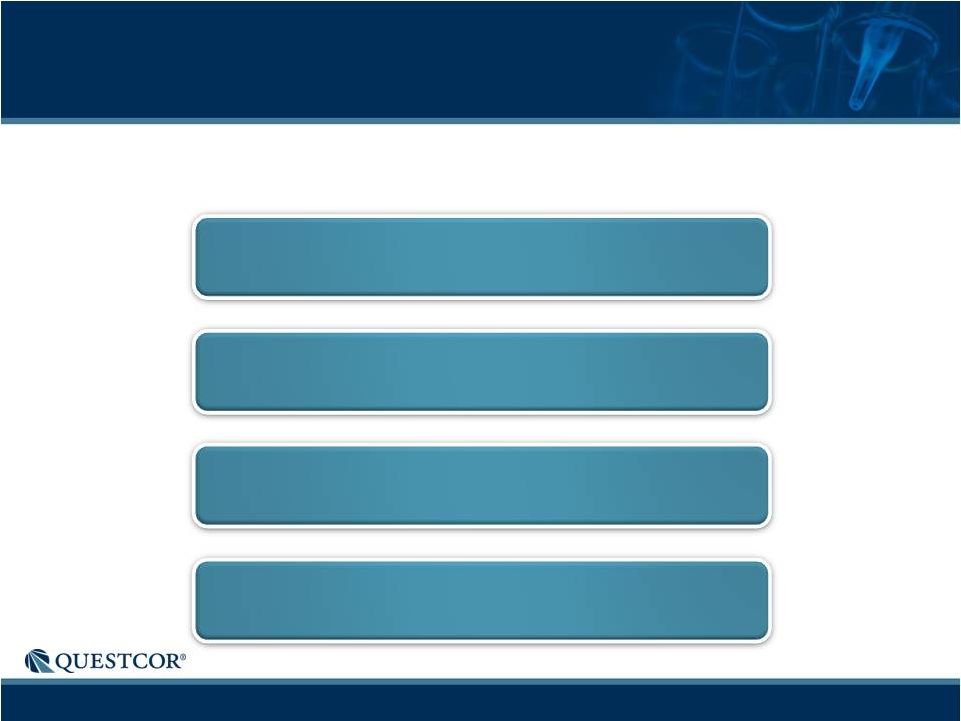 19 Approved
Acthar Indications Provide Strong Growth Potential
Key Indications:
5
Nephrotic Syndrome (NS)
(2 Indications)
Multiple Sclerosis Relapses (MS)
Infantile Spasms (IS)
Rheumatology-Related Conditions
( 6 Indications) |
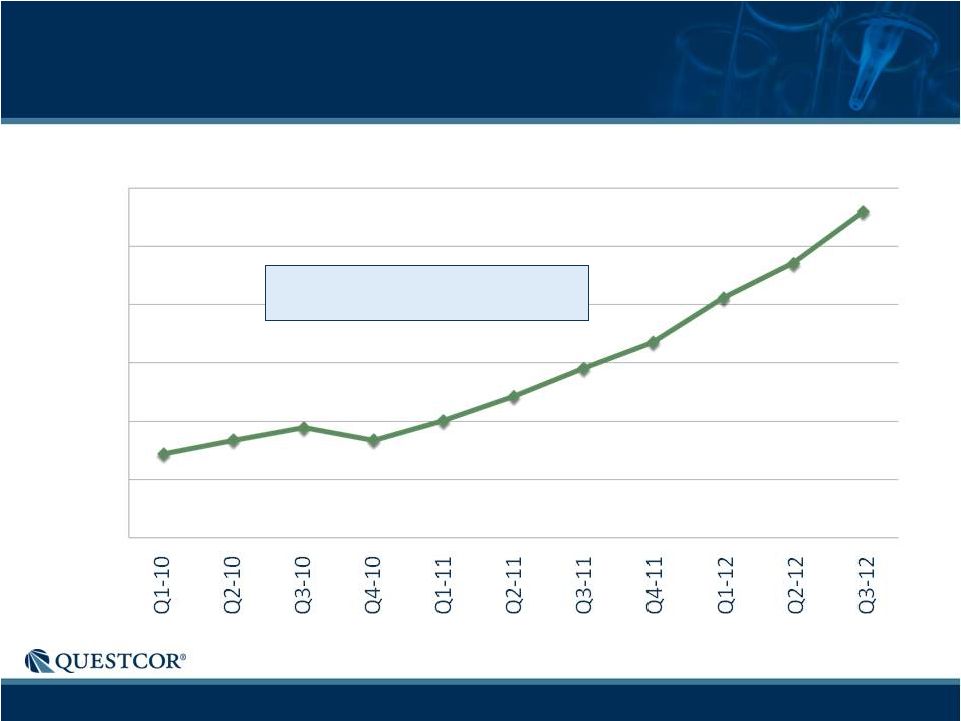 Acthar Usage
Expanding Rapidly Vials per Quarter
6,000
5,000
4,000
3,000
2,000
1,000
0
6 |
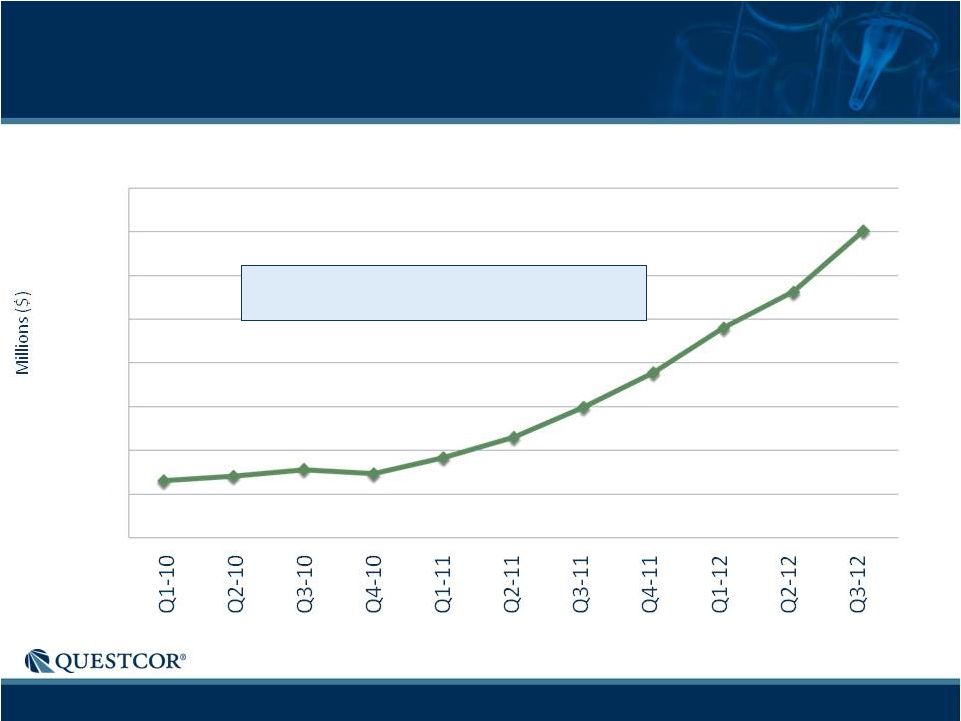 Strong Net Sales
Growth Net Sales per Quarter
160
140
120
100
80
60
40
20
-
7 |
 Estimated
Allocation of Acthar Net Sales Note: Questcor sells Acthar to a distributor
and does not have complete data with respect to end-use; allocation
based on internal estimates (Q3 2012). Infantile
Spasms ~9%
Other ~3%
Syndrome
45-47%
MS
Relapse
40-44%
8
Nephrotic |
 •
MDs typically reserve Acthar for when another FDA-
approved treatment alternative is needed, usually
after first-line therapy
–
Serious, difficult-to-treat medical conditions
•
Coverage decisions are determined on a case-by-case
basis, considering patient condition, disease severity,
and treatment history
•
Consistent level of insurance coverage over last
several years
–
Prior authorizations and close payer scrutiny continue to be the
norm
•
MDs typically reserve Acthar for when another FDA-
approved treatment alternative is needed, usually
after first-line therapy
–
Serious, difficult-to-treat medical conditions
•
Coverage decisions are determined on a case-by-case
basis, considering patient condition, disease severity,
and treatment history
•
Consistent level of insurance coverage over last
several years
–
Prior authorizations and close payer scrutiny continue to be the
norm
Stable Reimbursement Environment
9 |
 Increasing
Support of Questcor-Sponsored and Independent Research Projects
10
R&D Spending
Clinical & Preclinical Studies
30
25
20
15
10
5
0
2007
2008
2009
2010
2011
9m
2012
80
70
60
50
40
30
20
10
0
2007
2008
2009
2010
2011
9m
2012
65
34
33
20
2
0
22.1
16.8
10.9
9.7
10.6
4.8 |
 Nephrotic
Syndrome (NS) Characterized by excessive spilling of protein
from the kidneys into the urine (proteinuria)
Caused by a number of underlying types of kidney
disease (eg, iMN, FSGS, IgA nephropathy, etc.)
Can result in end-stage renal disease (ESRD), dialysis,
transplant
Significant unmet need; few treatment options
Acthar is indicated to induce a diuresis or a remission
of proteinuria in the nephrotic syndrome without
uremia of the idiopathic type or that due to lupus
erythematosus
Characterized by excessive spilling of protein
from the kidneys into the urine (proteinuria)
Caused by a number of underlying types of kidney
disease (eg, iMN, FSGS, IgA nephropathy, etc.)
Can result in end-stage renal disease (ESRD), dialysis,
transplant
Significant unmet need; few treatment options
Acthar is indicated to induce a diuresis or a remission
of proteinuria in the nephrotic syndrome without
uremia of the idiopathic type or that due to lupus
erythematosus
11 |
 Multiple
Sclerosis (MS) Relapse 1
Lublin et al. Neurology
12
•
•
•
Relapses can range from mild to severe, and can cause
a range of symptoms, from loss of sensation in the
extremities, to loss of vision and the ability to walk
Research indicates that relapses have a measurable
and sustained effect on disability in MS patients
1
•
Typically employed by MDs as a therapeutic alternative for MS
relapse, if one is needed, after steroid treatment
–
MS is a neurodegenerative disease occurring in about
400,000 patients in the US (>100,000 relapses/year)
Acthar is indicated for the treatment of acute
exacerbations (relapses) of multiple sclerosis in adults
2003 |
 •
Devastating, ultra-rare form of childhood epilepsy
•
Can cause permanent developmental disabilities,
increased mortality
•
Acthar
is
often
considered
the
“gold
standard”
and
is
currently used to treat 40-50% of IS patients
•
Devastating, ultra-rare form of childhood epilepsy
•
Can cause permanent developmental disabilities,
increased mortality
•
Acthar
is
often
considered
the
“gold
standard”
and
is
currently used to treat 40-50% of IS patients
Infantile Spasms (IS)
13 |
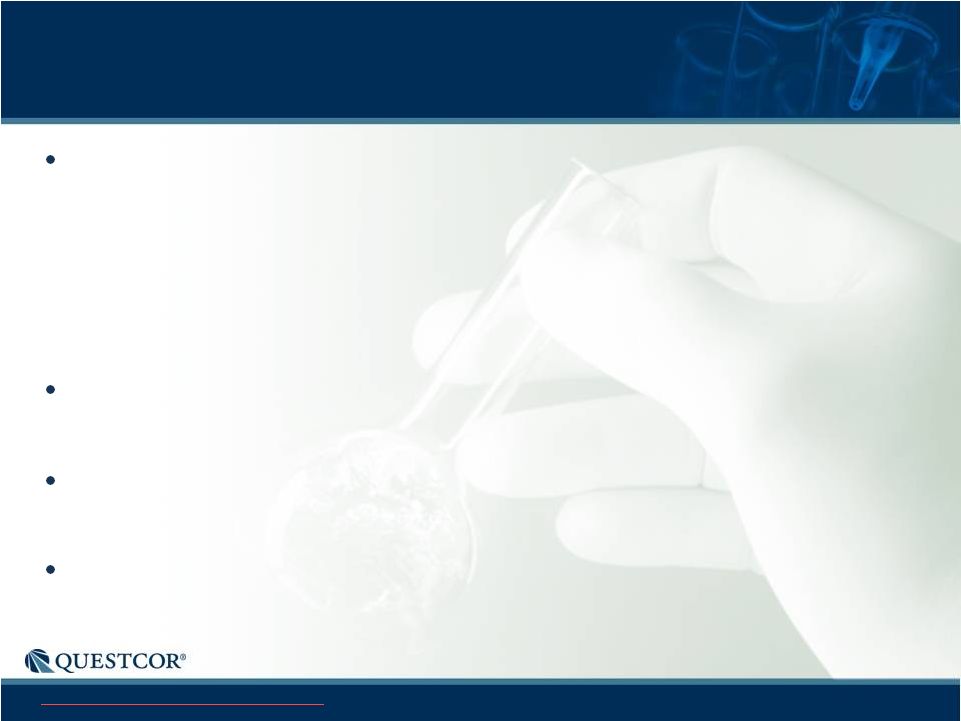 4 key
indications on the Acthar label* –
Dermatomyositis/Polymyositis (DM/PM)
–
Systemic lupus erythematosus (Lupus)
–
Psoriatic arthritis
–
Rheumatoid arthritis
Each can pose a serious health risk if not adequately
controlled
Some cases difficult to manage; Acthar is an FDA-
approved treatment alternative for select patients
Positive initial uptake; expanding Rheum sales force
4 key indications on the Acthar label*
–
Dermatomyositis/Polymyositis (DM/PM)
–
Systemic lupus erythematosus (Lupus)
–
Psoriatic arthritis
–
Rheumatoid arthritis
Each can pose a serious health risk if not adequately
controlled
Some cases difficult to manage; Acthar is an FDA-
approved treatment alternative for select patients
Positive initial uptake; expanding Rheum sales force
Rheumatology
14
*See
for specific label information.
http://www.acthar.com/files/Acthar-PI.pdf |
 How Does Acthar
Work? Treats autoimmune conditions across a variety of organ systems
Appears to modulate the immune system and associated
inflammatory response through binding to melanocortin receptors
Activity extends beyond steroidogenesis
–
Acthar binds to all 5 melanocortin receptors (MC1R-5R) found on immune cells
and cells in many of the targeted tissues (e.g., kidney podocytes)
1,3,5,6,8,9
–
Acthar also triggers the production of cortisol and other adrenal compounds
through binding to MC2R receptors found in the adrenal cortex
Acthar components have yet to be fully characterized
–
ACTH is the primary active component in Acthar, but there may be
others
Mechanism(s) of action not yet fully understood
Treats autoimmune conditions across a variety of organ systems
Appears to modulate the immune system and associated
inflammatory response through binding to melanocortin receptors
Activity extends beyond steroidogenesis
–
Acthar binds to all 5 melanocortin receptors (MC1R-5R) found on immune cells
and cells in many of the targeted tissues (e.g., kidney podocytes)
1,3,5,6,8,9
–
Acthar also triggers the production of cortisol and other adrenal compounds
through binding to MC2R receptors found in the adrenal cortex
Acthar components have yet to be fully characterized
–
ACTH is the primary active component in Acthar, but there may be
others
Mechanism(s) of action not yet fully understood
1
Arnason et al. Mult Sclerosis J. 2012;
2
Arya et al. J Child Neuro
2012;
3
Bomback et al. Amer J. Neph
2012;
4
Levine, Drug Design, Dev & Therapy, 2012.
5
Catania, et al. Pharmacol Rev. 2004;
6
Stafstrom, et
al. J Child Neuro
2011;
7
Manna SK, J Immunol. 1998;
8
Gong R. Nat Rev Nephrol. 2011;
9
Bohm et al.
Endocrine Reviews
2012;
10
H.P. Acthar Gel package insert. Questcor Pharmaceuticals, Inc., 2011.
1-4
1,5-9
1,5-9
10
15 |
 Receptor
Prevalent Tissue/Cells with Receptor
MC1R
Podocytes, Renal Mesangial Cells,
Endothelial Cells, Tubular Epithelial Cells,
Macrophages, Melanocytes, Immune/Inflammatory
Cells, Kerantinocytes, CNS
MC2R
Adrenal Cortex (Steroidogenesis), Adipocytes
MC3R
CNS, Macrophages
MC4R
Podocytes, Renal Mesangial Cells (?)
Endothelial Cells, Tubular Epithelial Cells, CNS
MC5R
CNS, Exocrine Glands, Lymphocytes, Podocytes
Adapted from Gong 2011, Catania 2004, Schioth 1997
Acthar Binds to Melanocortin Receptors
16 |
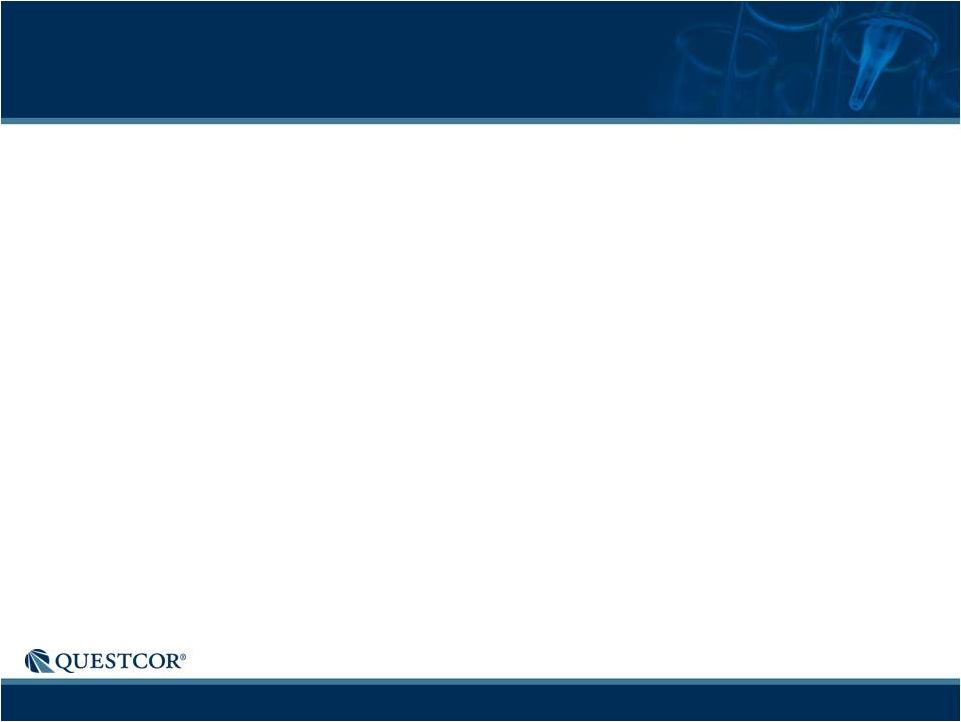 •
Grow the body of Acthar evidence for on-label indications
•
Examples of ongoing projects: lupus, dermatomyositis/polymyositis,
idiopathic membranous nephropathy
•
Better understand the biological properties of Acthar
Specific biochemical pathways, cells, and tissues
Immunomodulation and anti-inflammatory effects
•
Explore possible new indications
Diabetic nephropathy, ALS identified as possible therapeutic targets
Other possible autoimmune/inflammatory conditions
•
Grow the body of Acthar evidence for on-label indications
•
Examples of ongoing projects: lupus, dermatomyositis/polymyositis,
idiopathic membranous nephropathy
•
Better understand the biological properties of Acthar
Specific biochemical pathways, cells, and tissues
Immunomodulation and anti-inflammatory effects
•
Explore possible new indications
Diabetic nephropathy, ALS identified as possible therapeutic targets
Other possible autoimmune/inflammatory conditions
Understanding The Science Behind Acthar
–
–
–
–
17 |
 •
Complex formulation and pharmacology, with
multiple receptor binding properties
–
Slow release gel formulation
–
Complex and not well characterized (research is ongoing)
•
Formulation and manufacturing trade secrets inherent
with Acthar
•
Synthetic competitor may be possible, but in specific
indication
–
Clinical trial(s) and other development work likely required
–
Multi-year pathway; challenging IP landscape
•
Complex formulation and pharmacology, with
multiple receptor binding properties
–
Slow release gel formulation
–
Complex and not well characterized (research is ongoing)
•
Formulation and manufacturing trade secrets inherent
with Acthar
•
Synthetic competitor may be possible, but in specific
indication
–
Clinical trial(s) and other development work likely required
–
Multi-year pathway; challenging IP landscape
Biosimilar Pathways Highly Challenging
18 |
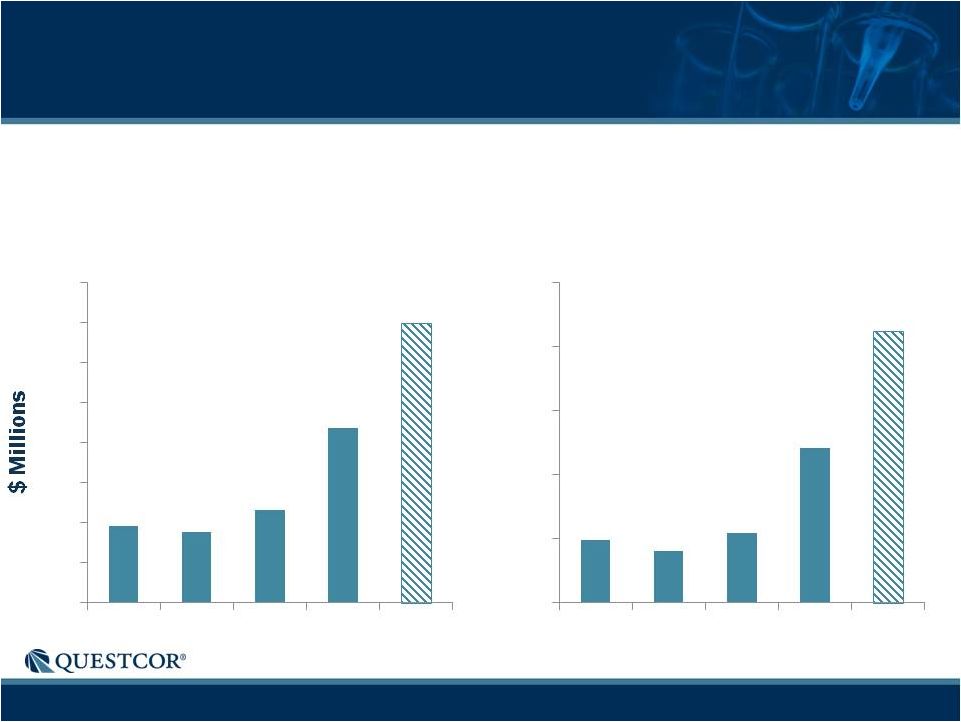 Financial
Trends 19
Net Sales
EPS
400
350
300
250
200
150
100
50
0
2008
2009
2010
2011
2012
9m
2008
2009
2010
2011
2012
9m
$2.50
$2.00
$1.50
$1.00
$0.50
$0.00
95
88
115
218
349
0.49
0.40
0.54
1.21
2.12 |
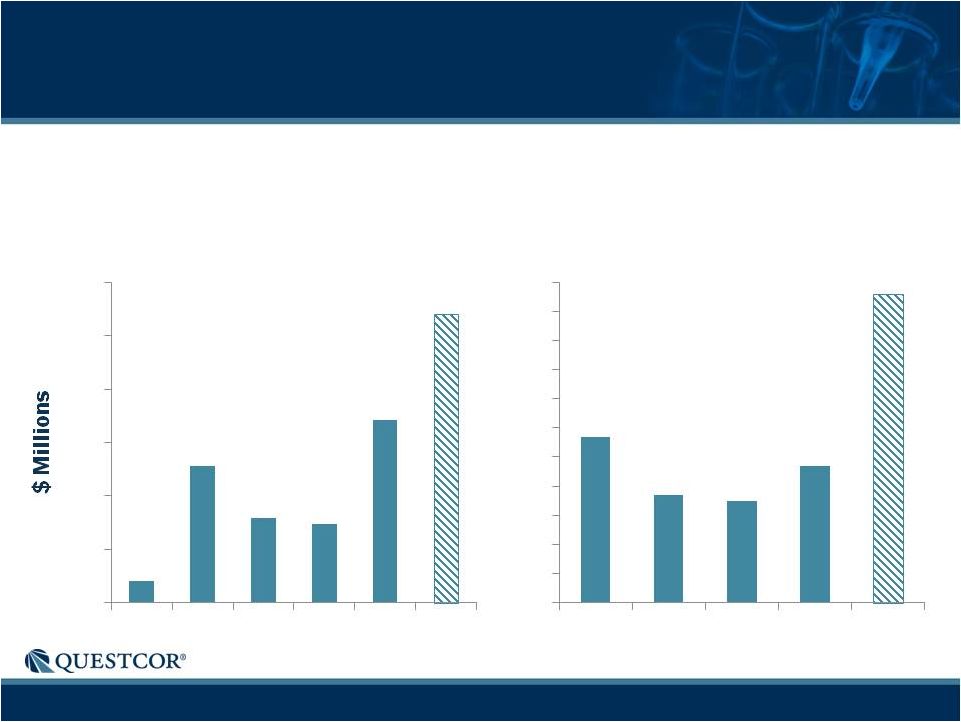 Cash Flow from Operations
ROE
150
125
100
75
50
25
0
2007
2008
2009
2010
2011
2012
9m
2008
2009
2010
2011
2012
9m
10
64
40
37
86
135
106
47
35
37
57
110%
100%
90%
80%
70%
60%
50%
40%
30%
20%
10%
0%
20
Financial Trends |
 Record Net
Sales (up 135%) and EPS (up 160%) Q3-2012 Financial Results
21
Net Sales ($M)
Gross Profit ($M)
Operating Income ($M)
Fully Diluted, GAAP EPS
Cash flow from operations (YTD $M)
Diluted shares outstanding
Q3 –
2012
Q3 –
2011
$140.3
$132.8
$83.4
$0.91
$135
61.4
$59.8
$56.1
$33.6
$0.35
$54
66.0 |
 •
Identifying and expanding Acthar therapeutic role in existing
and new indications
•
Long term investment in R&D
--
doubled R&D spending YOY
•
Highly selective, strategic diversification
•
Have already returned $322 million to shareholders through
share repurchases
–
21.4 million shares repurchased
•
Further expanded share repurchase program to 7 million shares
•
Initiated quarterly dividend in third quarter 2012 ($0.20 per
share)
*Data
as
of
9/30/12
•
Identifying and expanding Acthar therapeutic role in existing
and new indications
•
Long term investment in R&D
--
doubled R&D spending YOY
•
Highly selective, strategic diversification
•
Have already returned $322 million to shareholders through
share repurchases
–
21.4 million shares repurchased
•
Further expanded share repurchase program to 7 million shares
•
Initiated quarterly dividend in third quarter 2012 ($0.20 per
share)
*Data
as
of
9/30/12
Committed to Creating Long Term Value for
Shareholders*
22 |
 •
Questcor Pharmaceuticals Acquiring BioVectra Inc.
–
Acthar Active Pharmaceutical Ingredient (API) manufacturer
•
Further secures Acthar
®
API supply and manufacturing
trade secrets
•
Provides Questcor with third party manufacturing
capabilities
•
Expected to be accretive to future financial results
•
Terms: C$50 million upfront cash, plus potential for
up to an additional C$50 million depending on future
performance of the BioVectra business
•
Questcor Pharmaceuticals Acquiring BioVectra Inc.
–
Acthar Active Pharmaceutical Ingredient (API) manufacturer
•
Further secures Acthar
®
API supply and manufacturing
trade secrets
•
Provides Questcor with third party manufacturing
capabilities
•
Expected to be accretive to future financial results
•
Terms: C$50 million upfront cash, plus potential for
up to an additional C$50 million depending on future
performance of the BioVectra business
Strategic Acquisition: BioVectra Inc.
23 |
 Acthar: A
Sustainable Engine for Growth 24
Five Year Plan
•
Continue to expand usage in MS relapse, NS indications
•
Build and expand usage in Rheumatology indications
•
Continue to serve IS patient population and child neurologists
•
Evaluate therapeutic potential in other remaining on-label indications
•
Further characterize components, MOA, and unique characteristics
of Acthar
•
Actively pursue new indications for Acthar
Longer Term Plan
•
Launch new Acthar indications
•
Develop new formulations and products related to Acthar to help address additional
Five Year Plan
•
Continue to expand usage in MS relapse, NS indications
•
Build and expand usage in Rheumatology indications
•
Continue to serve IS patient population and child neurologists
•
Evaluate therapeutic potential in other remaining on-label indications
•
Further characterize components, MOA, and unique characteristics
of Acthar
•
Actively pursue new indications for Acthar
Longer Term Plan
•
Launch new Acthar indications
•
Develop new formulations and products related to Acthar to help address additional
autoimmune and inflammatory conditions with high unmet medical need
|
 Acthar has a
unique therapeutic role and sustainable competitive advantages
Acthar is approved for 19 indications, many
in markets with sizable unmet need
Sales in NS and MS have increased, yet
market penetration remains modest
Questcor is increasingly capable of funding
significant R&D investments
Profitable, strong cash flow and balance
sheet
Investment Highlights
25 |
 NASDAQ:
QCOR
NASDAQ:
QCOR
January 2013
26 |
